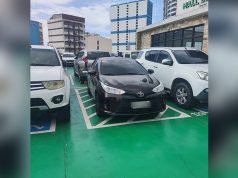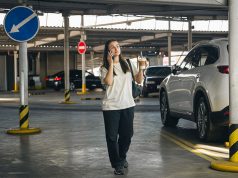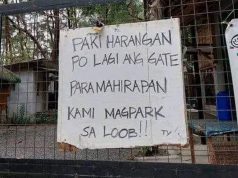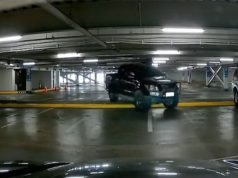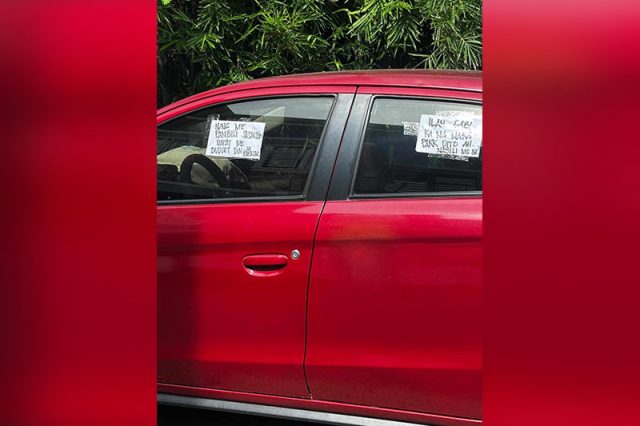
“Nabili mo na?”
The driver of a parked sedan in a residential area in Muntinlupa City was called out for an alleged improper parking habit.
Facebook page “Parkeserye,” which posts about improper parking habits, on Wednesday, November 13, posted photos of a red Mitsubishi Mirage G4 whose windows were filled with signage.
The signage was spotted on the windows of the driver’s and passenger’s seats, as well as on the rear windshield. These were:
“Kung me pambili sasakyan, dapat me budget din sa parking!”
“Ilan gabi ka na naka-park dito ah. Nabili mo na?”
“No parking on both sides. Hindi mo ba naiintidihan?!”
The page said the car was spotted in Country Homes in Muntinlupa.
The post has amassed 1,800 likes and laughing reactions, almost 300 comments and 143 shares so far.
Others claimed that there are “lots” of drivers with such a mindset in the area.
“Daming ganyan dito sa Country Homes, ‘yung may mga garahe nag-a-adjust. Lol,” a Facebook user wrote.
Another online user alleged that the sedan was parked on their street.
Someone asked him if there was an update on the situation.
“Wala na, naialis na agad. Hahaha, baka nakita [niya] oto [niya] dito ta’s inalis agad, hahaha,” the Facebook user responded on the same day the photos were posted by the page.
In the Philippines, especially in urban areas, it is not unusual for residential areas to have one-way streets due to the number of parked cars outside houses.
Residences with no garages tend to park their vehicles outside their house instead, occupying one lane of a street meant for passing cars.
Such practices have prompted lawmakers to file a bill that would require vehicle owners to make sure they have a parking space before they register their cars with the Land Transportation Office.
The bill also allows LTO officials to verify the parking spot claim before granting the vehicle registration.
RELATED: Social media weigh in on House bill requiring parking spaces before car registration
The bill, also known as the “No Garage, No Registration Act” if it turns into law, aims to “lessen traffic congestion, curb the number of private vehicles, provide safe and uncluttered pathways, where people may freely walk to their destinations, and maintain a clean and healthy environment by clearing the streets of parked motor vehicles and other similar clutter that reduce the space intended for human and vehicular traffic.”




